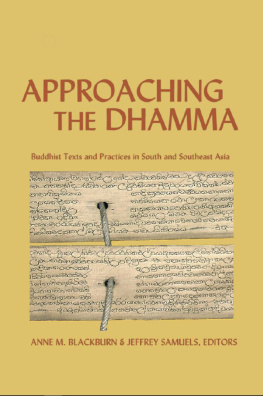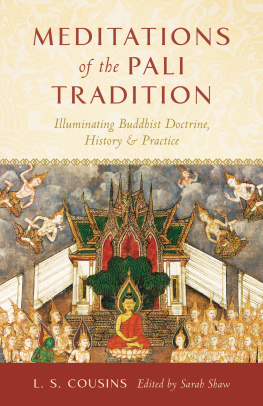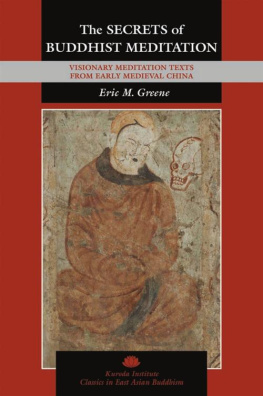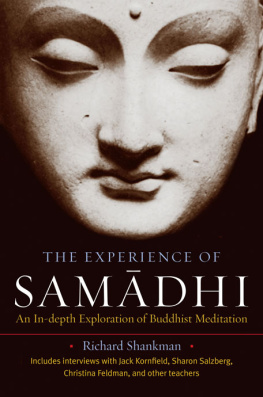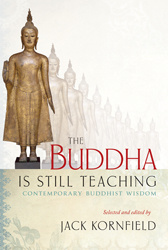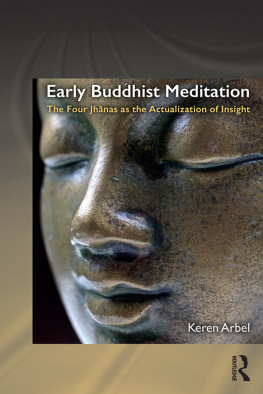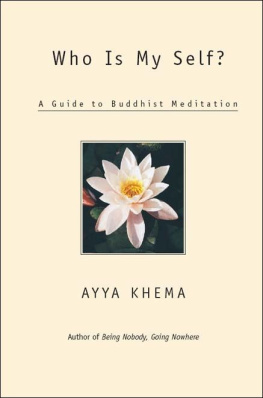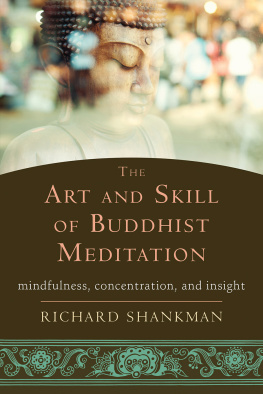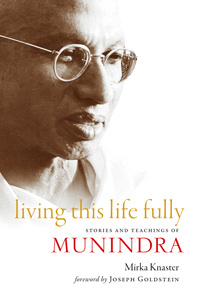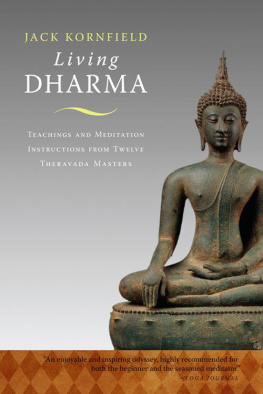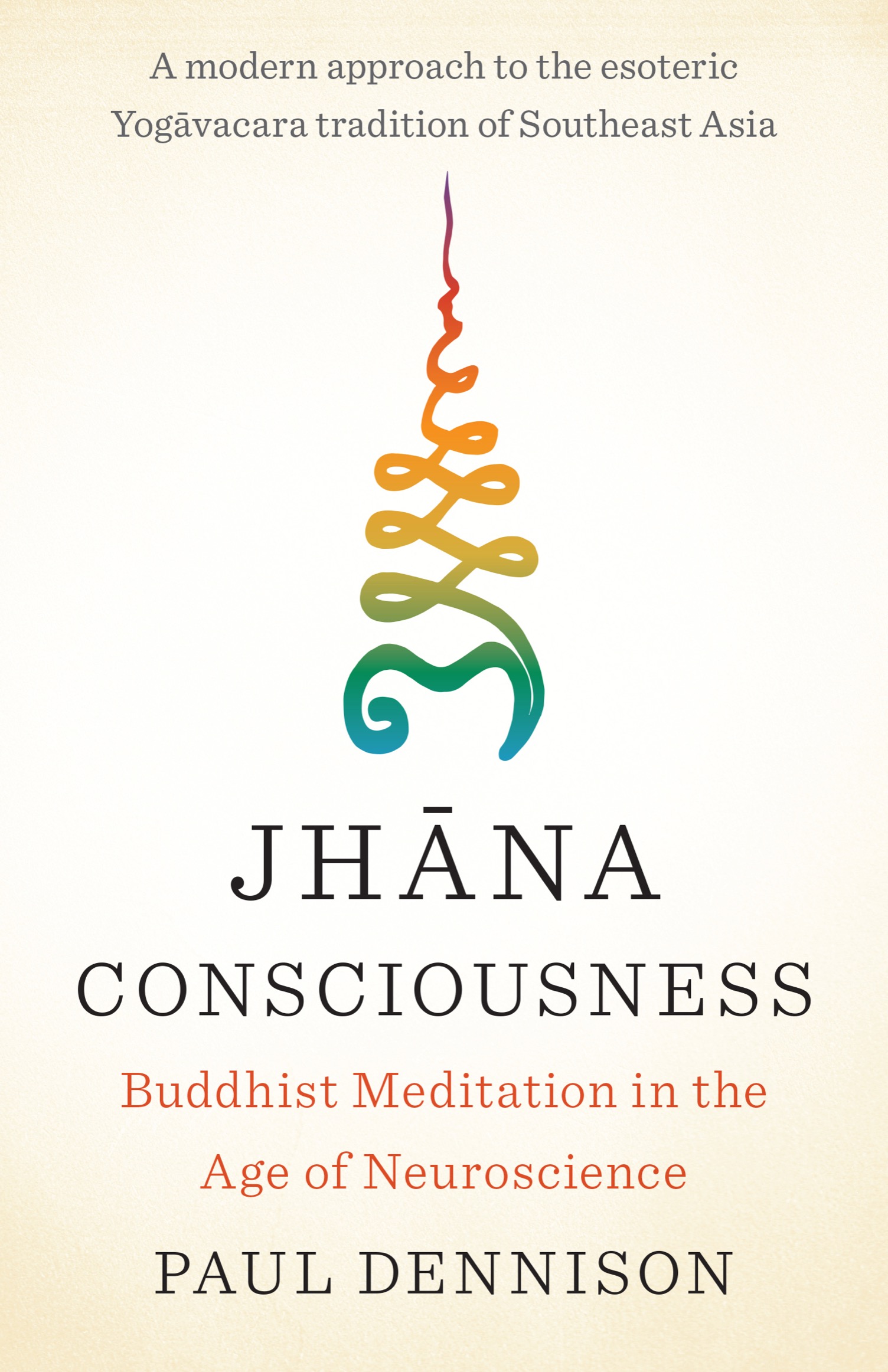Shambhala Publications, Inc.
Cover art: The BU yantra, executed by the author and adapted by Will Brown for Shambhala Publications
All rights reserved. No part of this book may be reproduced in any form or by any means, electronic or mechanical, including photocopying, recording, or by any information storage and retrieval system, without permission in writing from the publisher.
Shambhala Publications makes every effort to print on acid-free, recycled paper.
Shambhala Publications is distributed worldwide by Penguin Random House, Inc., and its subsidiaries.
LIBRARY OF CONGRESS CATALOGING - IN - PUBLICATION DATA Names: Dennison, Paul (Consultant psychotherapist), author.
Title: Jhna consciousness: Buddhist meditation in the age of neuroscience / Paul Dennison.
Description: Boulder: Shambhala, 2022. | Includes bibliographical references and index.
Subjects: LCSH : MeditationBuddhism. | NeurosciencesReligious aspectsBuddhism.
Classification: LCC BQ 5620 . D 45 2022 | DDC 294.3/4435dc23/eng/20220223
P REFACE

From the time of the Buddha, across more than two and a half millennia, practical means of contemplation and meditation have been taught to understand the nature of self, perception, and consciousness. The underlying motivation has always been to understand suffering, its arising, its ending, and the Path to its ending. The Buddhist Dhamma is the body of teachings that comprise this Path, and it has been the role of the Buddhist Sagha, the communities of monks and nuns, to preserve the Dhamma. To this end monastics follow carefully protected ordination lines and rules of conduct that can be traced back directly to the time of the Buddha.
During his lifetime, the Buddha predicted that at some point in the future the Dhamma and its teachings would be progressively lost due to breakdowns in the functioning of the Sagha together with a devaluing of samdhi, which in the context of this book refers to samatha meditation and jhna (see Chapter 14). Various estimations have since been made of the likely timescale of this deterioration, or decline, mostly in the range of three thousand to five thousand years after the Buddhas death. Although there have undoubtedly been many disruptions over the last two and a half millennia, the background to this book concerns the relatively recent so-called modernization reforms that swept across Thailand and Burma in particular, but then more extensively across Southeast Asia, from the early nineteenth century.
In Thailand, the first major event was the formation of a new ordination line in 1833, the Thammayuttikanikya (those who follow Dhamma, or Thammayut sect), by the monk Mongkut, who would later become King Rama IV of Thailand. Mongkut was the son of King Rama II and chose to ordain as a monk knowing his elder half-brother was more likely to succeed their father to become Rama III. Mongkut quickly became highly influential in the Sagha, as well as more widely as a future king, and was a leading figure in the reform movement that regarded the existing Sagha (from that point on referred to as the Mahniky, the larger sect) as corrupt and unscientific in many of its practices. This reform movement believed the new order would more carefully follow the teachings of the Buddha.
Mongkut and others in the new movement believed that it was no longer possible to develop the complete Buddhist Path, and accordingly the new ordination ritual dispensed with the age-old formula to seek ordination to end suffering and to attain enlightenment, nibbna, replacing it simply by an aspiration to go forth into the order of monks.
It might also have been a factor that the renowned meditation master Suk Kai Theun, spiritual mentor to Monkuts father and grandfather, the kings Rama II and Rama I, had died just one year before Mongkut ordained, leaving something of a leadership vacuum in the old practice traditions he represented.
The new Thammayut sect took a more austere line than the centuries-old Mahniky, eating only one meal a day and rejecting all practices they saw as superstitious or linked to older magical (Thai, saiyasat) roots. Those old practices are now commonly referred to as boran kammahna, traditional meditation practices, by Buddhist scholars and ethnologists. Many samatha practices related to the states of meditative concentration known as jhna, particularly those that develop high-energy states of ptialso popularly regarded as saiyasatwere treated with wariness or simply rejected.
Whatever good intentions may have been behind the early reforms, there is no doubt in retrospect that establishing a second ordination line weakened the ability of the Sagha to function with a unified voice to protect the Dhamma. This came to a head from the 1950s onward when heavy political promotion of a new vipassan, or insight meditation, method from Burma led to active suppression of jhna traditions that had been central to the Path since the time of the Buddha. The reform movement claimed that jhna meditation was in fact not necessary to develop the entire Buddhist Path.
Within a few years, temples across Thailand and Burma, and soon more widely with repercussions worldwide, were instructed to cease teaching and practicing jhna meditation, and to instead train in and teach the more scientific vipassan methods.
Such is the backdrop to this book: how the esoteric, beautifully creative, and sometimes magical traditions of the pre-reform era, reminiscent in some cases of tantric Mahyna practices, came to be lost in Southeast Asia apart from minor traces, to then re-emerge or be reborn in the United Kingdom from the early 1960s onward. The nature of this re-emergence has centered around jhna meditation, both the form (rpa) jhnas, and the formless (arpa) jhnas, as well as a parallel development of insight, or vipassan, alongside the jhnasan interdependence rather than entirely separate modes.
As well as the centrality of the jhnas, a key feature of this re-emergence has also been recognition of an essential involvement of the body, including its energization during development of the second rpa jhna by the jhna factor pti. Taken together, these features are highly reminiscent of pre-reform practices of the Yogvacara, once widespread across Southeast Asia. Yogvacara is closely related to the broader designation boran kammahna, mentioned already, but is the preferred term in this book because of the way it captures the profound interrelationship between mind and bodythat is, it is a yoga that develops (or should develop) as a natural outcome of jhna meditation.
Since early seeds in the 1960s, which steadily developed over more than fifty years and in the quite different cultural context of the West, there now exists a complete teaching of the four rpa (form) jhnas and the four arpas, or formless practices, popularly referred to as the arpa jhnas, as preparation for the Path.
These developments have taken place under the umbrella of the Samatha Trust established in 1973 as a charity (it is now a charitable incorporated organization, CIO) to foster practice and study in the samatha-vipassan tradition, including pre-reform understandings of the jhnas. The Trust operates three centersa national meditation center in Wales and two regional centers in Manchester and Milton Keynessupported by a wide network of local groups that meet in many cities across the UK, as well as in the US. Courses are offered in various aspects of meditation practice (not only the jhnas) and related activitiesdetails are available on the Trusts website, www.samatha.org.



